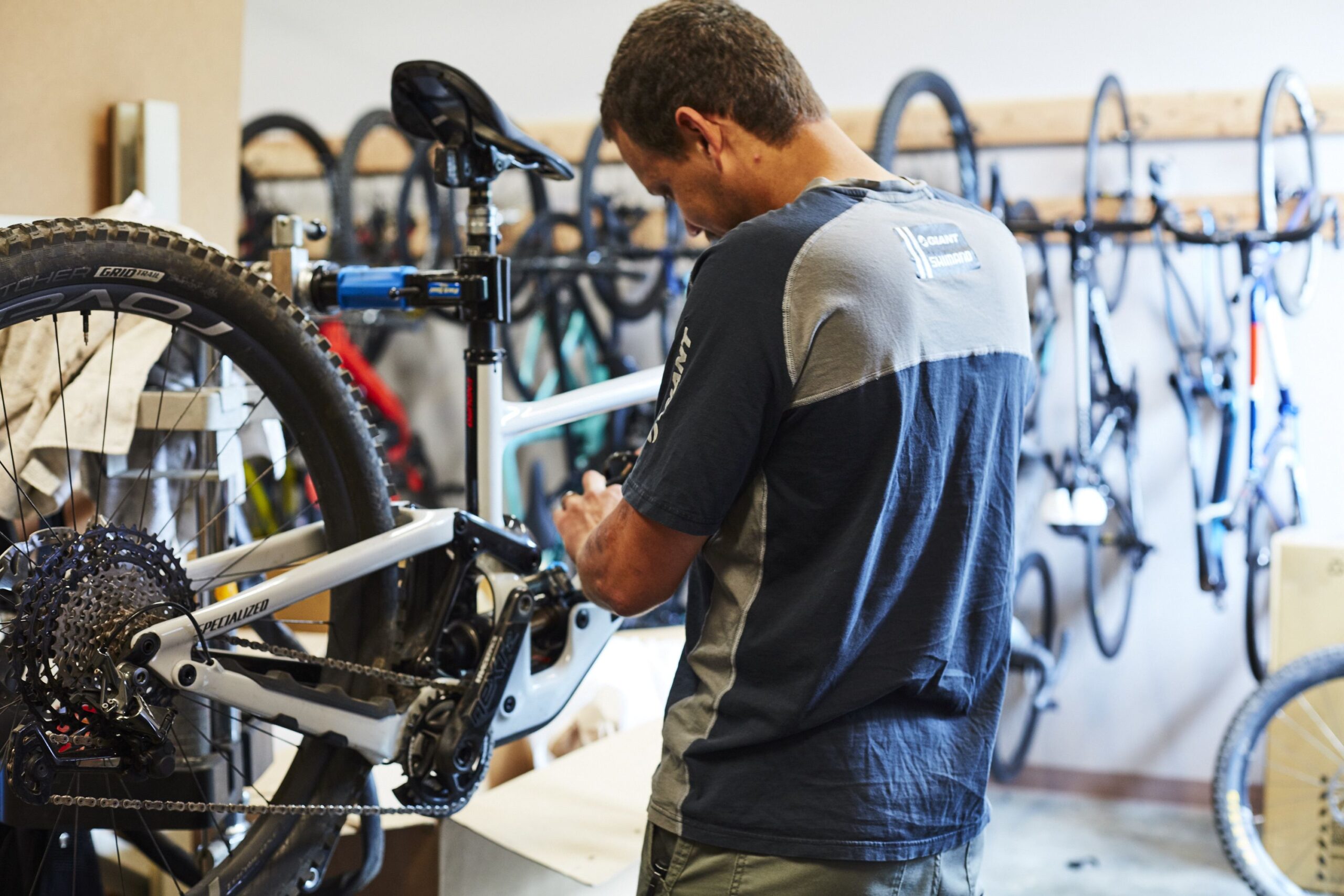Being a bike lover or someone who uses their bike to do all running around, recreation, and exercise, being able to fix a flat tire on your bike should be one of the first things you need to learn to have a seamless ride and tackle any challenge you might have while on the road. Whether you ride on flats or you ride rocky roads, a flat tire is something you are bound to experience sooner or later, and need to get prepared for it
Changing your bike’s tire can be very easy and doesn’t require many tools so far you know how to handle it. Just like you do with your car, your tools for your bike should always be with you.
Some of the bike tools you will always need include;
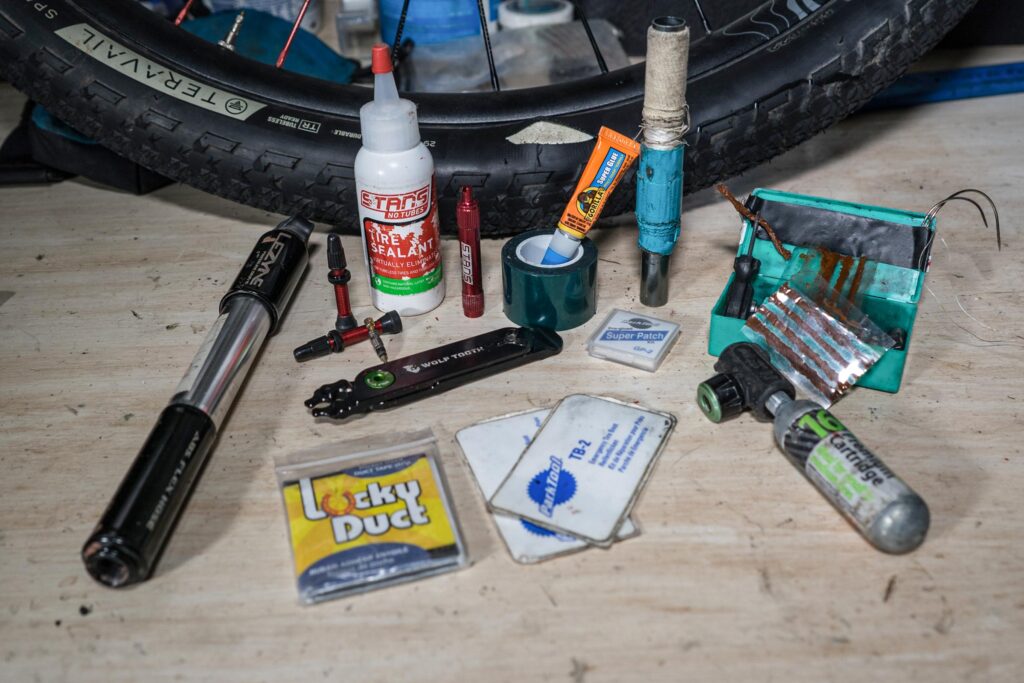
- Tire levers
- Correctly sized spare tube
- Inflation device (a mini pump or CO2)
- Bike tube or bike tube patch kit
- Bike pump
- Tools to remove your wheel if you don’t have quick-release levers
- Valve extension
- Tubeless tire repair kit
Read also: Kids Guide On How To Ride A Bike
Before you start fixing your tires………..
To have a better view of your bike tire, you can either put the bike on its side or stand it upside down, resting on the handlebars. However, some cyclists avoid placing the bicycle upside down because this position could damage the handlebars or seat.
Choose the position with which you feel the most comfortable. You can also purchase an upright bike stand that positions the bicycle off the ground while you work. If it’s the back tire you are replacing, then it’s important to adjust the gears to the smallest ring beforehand to make it easier to remove the tire.
Now that you are ready to fix your flat tire, follow these 5 easy steps to fix your bicycle flat tire;
Step 1: Remove The Wheel

- Check if you have a V-brake or cantilever brake, then disconnect the brake cable from the brake arms.
- If it’s your back tire that is flat, in this case, use your gears to shift the chain to the smallest sprocket.
- Loosen the quick release to free the wheel, or use a crescent wrench if the wheel is attached to nuts
- Remove the wheel. If it’s the back wheel, hold the derailleur down as you pull the wheel out.
- If your bike has disc brakes, once the wheels are off, make sure you don’t touch the brake levers or you may have trouble getting your wheel back on. If you can’t trust yourself, slip a piece of cardboard between the pads.
Step 2: Pull Out The Inner Tube

- Open the valve and deflate the inner tube all the way.
- Get one side of the tire bead off the rim, start by pushing the tire all the way around to help loosen it from the rim.
- If the tire’s tight, use tire levers. Insert a tire lever between the tire bead and the rim edge. Use leverage to flip the tire lever over and hook the tire lever onto a spoke to lock it in place.
- Insert another lever a few centimeters from the first.
- Push down on one lever, then the other, to free the tire from the rim. Work around the tire until one edge of the tire is off the rim.
- Reach inside the tire and pull the inner tube out. When you get to the valve, gently pull it through the rim.
Step 3: Find Where The Problem Is
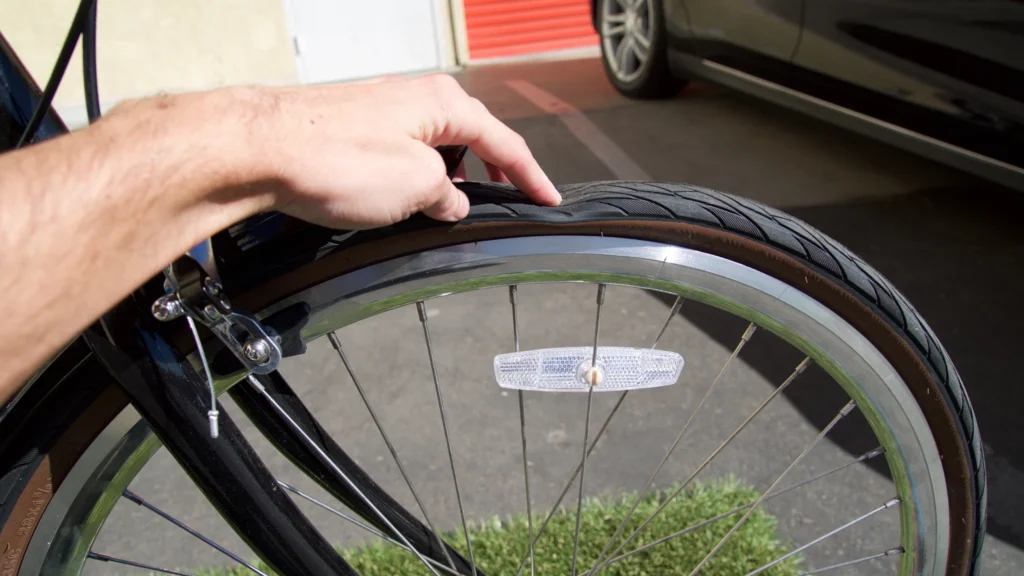
- Use your bike pump to inflate the old tube fully.
- Find the source of the leak, then hold the tube near your cheek and move the tube past your face to feel for escaping air.
- When you’ve figured out where the hole is, a circle with a marker so it’s easy to find where the corresponding spot is on the tire
- Inspect the part of the tire or the rim where the hole is to find the source of the leak. If there is something stuck in the tire or rim remove it, otherwise it will cause another flat tire.
Step 4: Patch The Tube
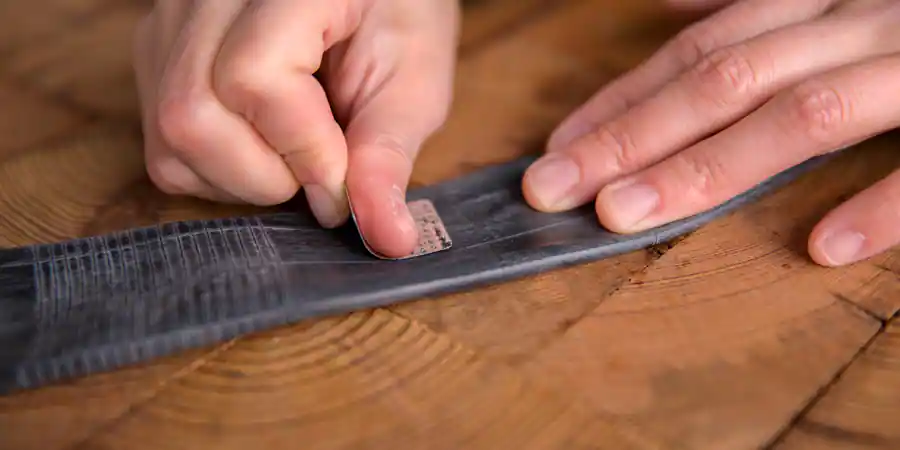
- Deflate the tube and get out your patch kit. Make sure the tube is dry before you move on.
- Use the sandpaper in the patch kit to roughen a patch-sized section around the puncture.
- Clean the sanded area and apply a thin layer of glue around the puncture that’s big enough for the patch. Wait a few minutes for the glue to cure before you apply the patch; the glue should be tacky to the touch.
- Peel the foil side from the patch and apply it over the puncture with strong pressure for at least 30 seconds.
- Leave the plastic sheet in place and keep applying pressure for a few minutes to let the patch bond.
Step 5: insert tube and replace tire and brakes
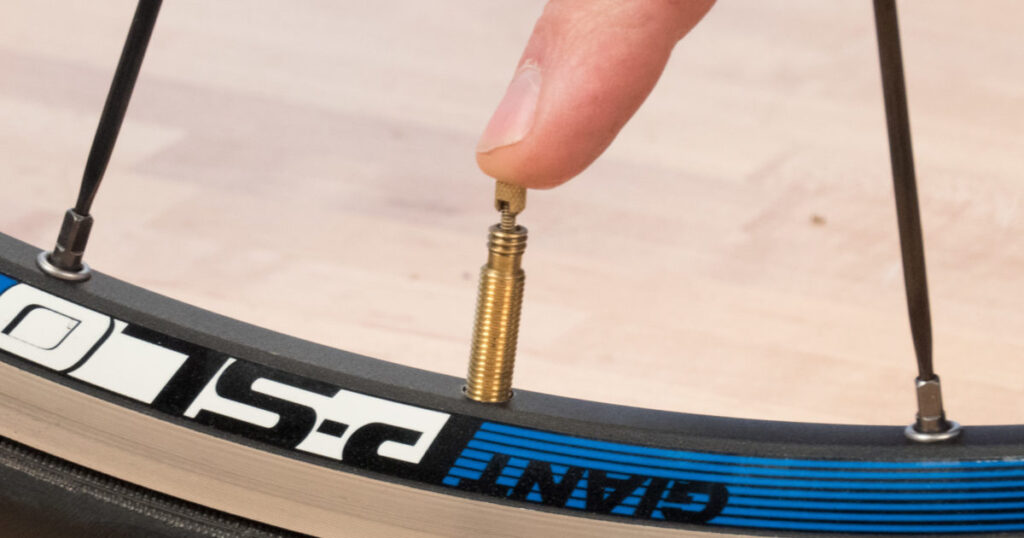
- Use your bike pump to inflate the new or patched tube about 50% to give it structure and shape.
- Push the inner tube valve through the hole in the rim and make sure it’s not crooked.
- Starting from the valve, work the inner tube into the tire so it’s completely tucked in.
- Use your hands to work the tire bead over the rim. Make sure you don’t pinch the tube between the tire and the rim
- The last few centimeters can be the hardest. Grab the tire with both hands and use the meaty part of your hand to work the sides back onto the rim; work one side, then the other. You can also use tire levers. If you use tire levers, make sure you don’t snag the tube.
- Check both sides of the wheel and make sure the tire’s sitting nicely all around the rim, and that the valve didn’t shift around or tilt during the process.
- Inflate the tire to the recommended PSI, tighten the valve nut, and replace the valve cap.
- Pull the derailleur down and make sure the chain wraps around the cassette. Align the disc brake rotor with the space between the brake pads, and ensure the axle is in the dropouts.
- Insert into the dropouts and properly tighten the quick-release lever. Once there’s enough tension, push the quick-release lever back into position and check that it’s solid.
- If your bike has rim brakes, remount the brakes.
And you are done!! Was easy right?
Read also: How To Fix Common Bicycle Brake Problems: Tips And Tricks
But then again, prevention is better than cure. There are certain things you need to do for your bike’s health to prevent it from having a flat tire. Some of these things include;

- Use talcum powder to dust the inner tube
- Use the correct PSI range to keep tires at bay
- Get stronger tires
- Use tubeless tires
- Add extra protection like rim strips and tire liners
- Replace your tires regularly
- Always stop to observe your tire
- Use tire wipers
- Keep your tubes in good shape
Want to know more about how to maintain your bike to prevent future issues? Then read 5 Essential Bike Maintenance Tips Every Cyclist Should Know

